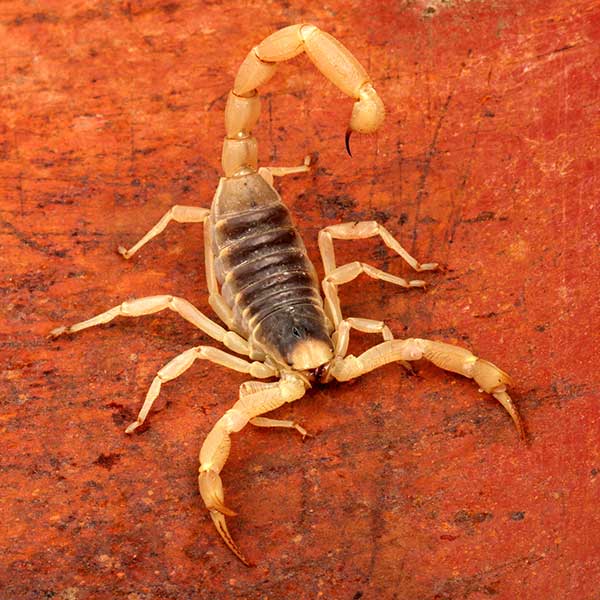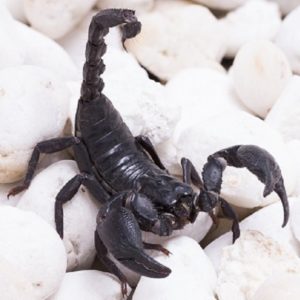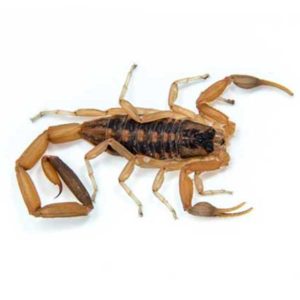Desert hairy scorpions love hot nights, the kind of nights southern Nevada residents are accustomed to. Like miniature monsters moving on a sound stage, this venomous pest likes nothing better than to take a walk after dark across deserts, through lawns and sometimes into human dwellings. The largest of American scorpions, desert hairy scorpions are active and aggressive, and will not hesitate to sting if provoked. Although the pain of a sting has been compared to that of a honeybee, sometimes fatal allergic reactions can occur triggering prolonged pain, excessive swelling, and difficulty breathing. Desert hairy scorpions give birth to live young which remains on the mother’s back for a week or more.
Desert Hairy Scorpion
Color: Pale Yellow, Brown, or Olive Green
Legs: 8
Shape: Oval; Long Tail
Size: 10 – 18cm (4 – 7″)
Antennae: No
Flight: No
Desert Hairy Scorpion Habits
Although the desert hairy scorpion loves the desert life, they do make forays into suburban neighborhoods where they search out ornamental plants, irrigated lawns, and protective crevices, which provide them with two of their favorite things aside from a summer stroll — food and water. Desert hairy scorpions will eat pretty much anything they can catch. This close association with human dwellings is a potential source of unwanted infestation by this menacing and long-lived pest (7 – 10 years in the wild) and represents a unique but manageable concern for residents of southern Nevada.
Threats Posed by Desert Hairy Scorpions in Las Vegas
Desert hairy scorpions go where they please and if they end up establishing residence in a home, lawn or other habitat frequented by humans, then immediate action is required in order to prevent a problematic and potentially painful infestation. These creepy crawlers generally mate in warm weather, making the desert southwest an optimal breeding ground for infestation. Once the desert hairy scorpion finds an appropriate habitat for mating, females give birth to a large litter of 25 – 35 individuals. These nocturnal nomads are very skilled at hiding until dinner hour rolls around. That is typically the time unexpected and memorable encounters with humans occur.
Desert Hairy Scorpion Prevention
Desert hairy scorpions are extremely compatible with humans because people and their living habits provide the creepy critters with a variety of food sources, particularly bugs of all kinds, along with access to all the water they can consume. Several prevention protocols, such as changing the color of your lighting, can prove effective against desert hairy scorpion intrusions and the unpleasant repercussions. Professional pest control consultants are expertly trained to provide homeowners important preventative information about this and other problem pests.
Desert Hairy Scorpion Control
Desert hairy scorpions are as comfortable in your home as you are which is why prevention and control are so important in avoiding surprise confrontations. These threatening pests have evolved well-developed survival skills fully capable of encroaching on the peace and serenity of a home or the efficient routines of a workplace. The best approach to eliminating desert hairy scorpions and preventing future problems with them is through professional help. At Rentokil, our pest control professionals resolve desert hairy scorpion infestations using a variety of different treatment techniques, including state-of-the-art surveillance, removal and exclusion solutions.



